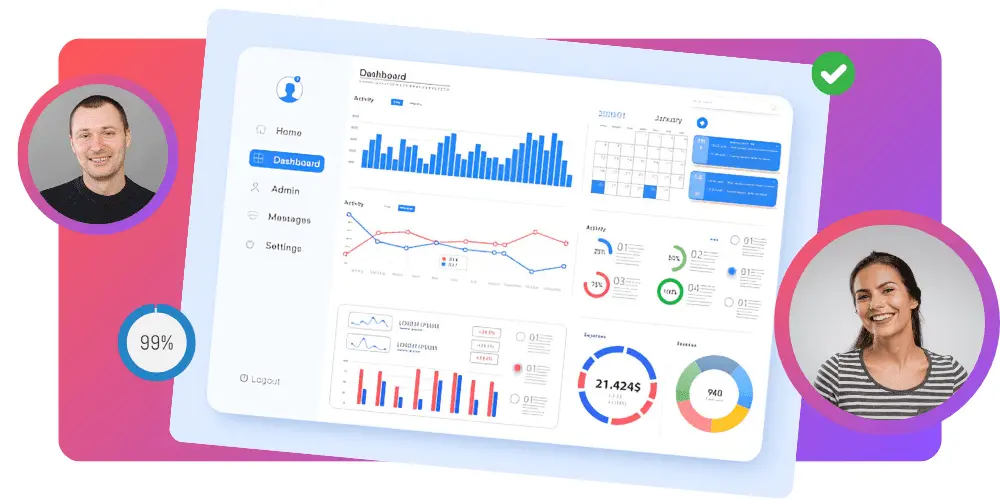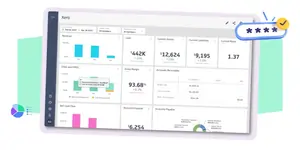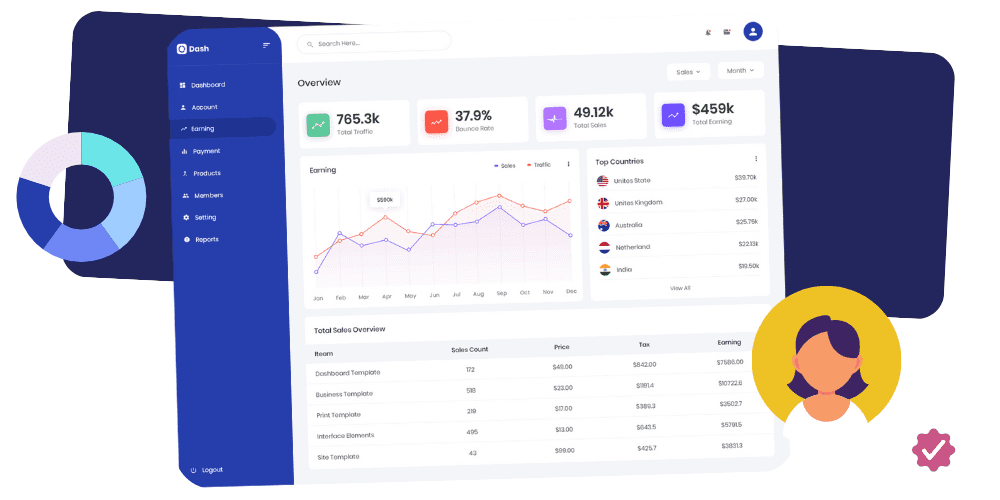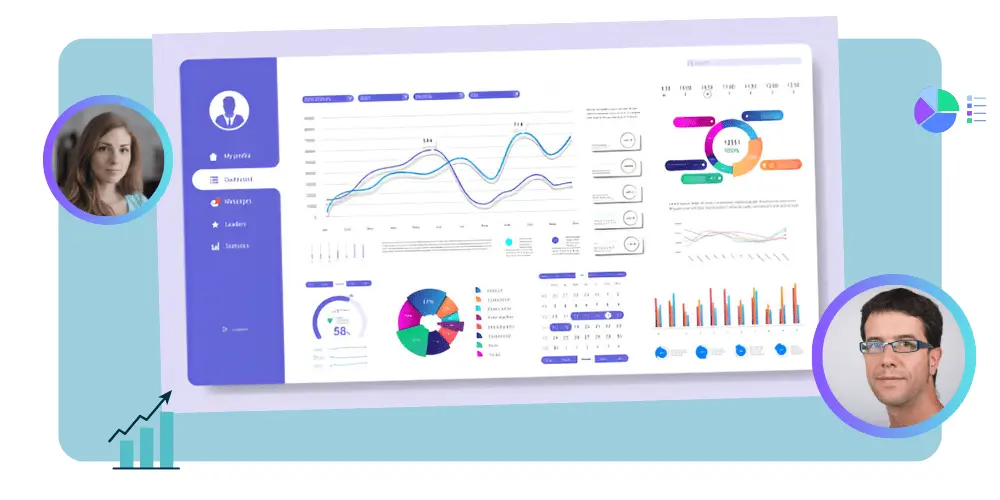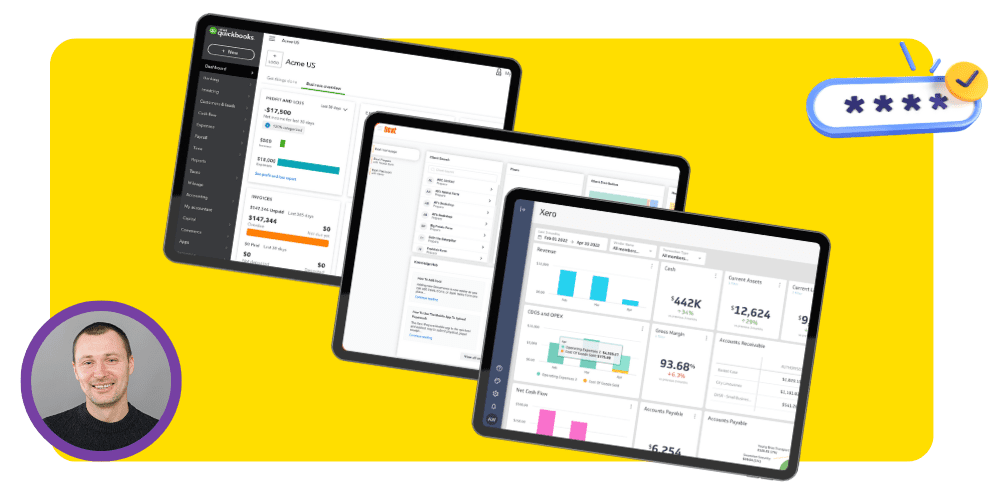Did you know that every year, UK businesses leave billions in unclaimed research and development tax relief on the table?
Claiming R&D tax relief does not have to be so difficult. Many founding activities, for example, software development or even manufacturing improvements carried out by startups, might already be activities that qualify for pretty substantial tax savings.
How does R&D Tax Relief Work?
R&D tax credits are meant to promote the increase of spending on research and development by providing relief on taxes. This is very important for companies because such credits could positively boost their cash flows since they reduce the Corporation Tax bill or provide direct cash payments. Claims can be made for even those projects that did not achieve their intended objectives. The company has to submit an R&D request to HMRC with a breakdown of the amount of spending that has been done on R&D along with the corporation’s tax return to start a claim. What is more, companies are also able to get tax relief on R&D costs for the two periods of accounting that went before.
R&D tax relief is not the only relief that can help you reduce your tax bill.
To qualify for R&D tax relief, a company must have
- Have engaged in R&D projects
- Incurred qualifying R&D expenditure in the last two accounting periods
- Be located within the UK
If you’re outside the UK and considering a startup in the UK, you might want to read our guides
Two schemes are available for UK businesses: the Small and medium-sized enterprise R&D tax relief scheme and the Research and Development Expenditure Credit (RDEC) scheme. The SME scheme stands for Small and Medium Enterprises, under which SMEs in the UK can claim an enhanced rate of tax relief of up to 27%. There are certain conditions due to which a company may not qualify to be an SME, in turn not being able to claim relief under this scheme:
- Subcontract work from larger corporations
- Obtain grants specifically for their R&D projects
The RDEC scheme is available for larger companies and SMEs that do not qualify for the SME scheme, offering a lower rate of up to 10.53% on qualifying R&D costs.
Major Changes to R&D Tax Relief in 2024
From 1 April 2024, there will be major changes to the R&D tax credit schemes with SME and RDEC schemes that were there before being collapsed into a new RDEC merged scheme(subject to final parliamentary approval) and available to all businesses, large or small. The SME scheme will just fall away. However, claims can still be made for periods before this date. To better understand if your business is eligible for R&D claim, consult with an accountant providing R&D credit services.
Key features of the updated scheme are a taxable credit of 20% of qualifying expenditure, a new intensity threshold of 30% for R&D Intensive SMEs to qualify for a higher rate of credit, and specific rules for Northern Ireland businesses.
From 8 August 2023, all companies must file the Additional Information Form (AIF) either with their Company Tax Return or before the same. The final submission process is a multi-component, and in the correct order to be submitted. The Additional Information Form should be submitted first, and then the Company Tax Return (CT600). If being submitted on the same day, then the AIF is required to be submitted earlier than the tax return to prevent rejection of the claim.
Although HMRC targets a 95% processing rate within 28 days, in practice claims are generally processed between 20 and 100 days. Following approval, payments generally reach companies within an additional 20 days.
You can read more about the major changes on the gov.uk website.
How to Get Ready For Your First R&D Claim
Preparing an R&D tax relief claim for the first claimant should be done meticulously and with all the correct documentation. Businesses will need to notify HMRC of their intention to claim before they can actually claim R&D tax relief for periods of account beginning or after 1 April 2023.
Details of the project shall be provided separately on SME tax relief and expenditure credit claims based on qualifying costs for each relief. Therefore, you should ensure that all documentation is accurate and complete because any errors would result in the claim being rejected or delayed in processing.
How to Calculate R&D Expenses
When it comes to claimable expenses, businesses can receive tax relief on various qualifying R&D costs. The amount of cashback depends on the total qualifying expenditure and the nature of the expenses incurred. For instance, companies can claim more for employee salaries compared to subcontractor fees, while certain expenditures, such as rent, do not qualify for R&D tax relief at all.
You can claim the following costs of the project:
- Hiring and retaining costs of the staff including their salaries, NI contributions and pensions
- Materials used
- Licences for exclusively used software
- Outsourced employees and contractors (65% of payments made to recruitment and supply companies)
Payroll might be one of the largest costs your business incurs:
Setting Up Internal Accounting Systems
Setting up effective record-keeping systems from the outset will help ensure that claims can be properly substantiated and maximised. HMRC advises that companies keep up to date records that show:
- The aspired scientific or technological advance
- The obscurities that needed to be addressed
- How the project helped resolve the issues
- The qualifications and experience of the staff engaged in the project
Enterprises shall be required to put in place a system for tracking R&D activities and periodically review projects. The approach will be systematic with updating every change in documentation. This will also cover successful as well as unsuccessful efforts to resolve technological uncertainties since relief is available even for failed attempts.
HMRC recognises that, for a first-time claimant, it is not possible to have detailed, up-to-date records for past activities. However, going forward, companies should put in place robust processes to capture such information on a timely basis as projects progress.
How Do You Submit an R&D Tax Credit Claim?
For accounting periods beginning on or after April 1, 2023, companies must submit a claim notification form to HMRC. Such notification shall be made within six months after the end of the accounting period to which the claim relates. For example, with respect to an accounting period running from January to December 2024, the notification would be due in June 2025.
The notification requires:
- Unique Taxpayer Reference of the company
- Contact details of a senior officer responsible for R&D
- Details of any agents involved
- High-level summary of the activities to be undertaken
Technical Narrative Completion
Your Technical Narrative is essential for explaining to HMRC how your work qualifies for R&D tax relief. It should detail the projects undertaken by your company, the technical uncertainties faced, and the methods employed to address these challenges, regardless of whether you succeeded in overcoming them. Additionally, it is important to substantiate the size of your claim by providing information on the number of projects, the time invested by employees or contractors, and any relevant expenditures incurred during the period.
How to Maximise Tax Relief?
Maximising research and development tax relief is much more than basic eligibility and requires a careful approach. Companies can implement comprehensive identification and tracking systems to raise the value of their claims substantially.
Identifying All Eligible Projects
Effective project identification goes beyond the obvious research activities for claiming relief. Companies should review All technical and development work (including seemingly routine activities that may involve technological uncertainty). Companies would be able to claim relief for data license costs and cloud computing expenditures that are used in R&D activities from April 2023. Such an extension permits businesses to include the following in their claims:
- Data Storage and Analysis
- Hardware Infrastructure
- Operating Systems
- Software Platforms
Tracking Qualifying Costs Effectively
Systematic tracking of costs is an important prerequisite for claim maximisation. The companies should have in place real-time tracking systems that capture all of the following qualifying expenditure categories:
| Cost Category | Tracking Method |
| Staff Costs | Timesheet systems employing R&D activity codes |
| Consumables | Dedicated cost centres for R&D materials |
| Software | Usage data recorded and checks on licenses |
| External Workers | Separate ledger codes for different worker types |
The new overseas costs and subcontracted R&D rules will need careful consideration for accounting periods beginning on or after 1 April 2024. It will be essential for companies to be sure that their tracking systems can separate UK expenditure from that in other countries.
Timing Your Claim Strategically
A timing claim strategically can make a huge difference in claim value. Companies should consider:
- Pre-Notification Requirements: Advance notification to be filed within six months from the end of the accounting period
- Preparation of Documentation: Evidence should be drawn from recent records maintained as and when the project is executed and not from retrospective records
- Filing Window: Claims can be filed within two years from the end of the accounting period
- Project Planning: Planning the projects so that the R&D activities are aligned with the accounting period for better value of claims
For projects that include subcontractors, the connected party payments are subject to different rules. Companies are allowed under the merged scheme to claim 100% of the lowest between the contractor payment and the contractor’s relevant costs.
By putting in place robust tracking systems and detailed documentation, companies can capture all qualifying costs while meeting HMRC’s stringent evidence requirements. Reviewing R&D activities and expenditures regularly helps to identify potential claims at an early stage, allowing more time for their thorough preparation and thus maximising the chance of successful claims.
Additional Resources
Conclusion
Research and Development tax relief offers significant benefits to UK startups, although many businesses are still missing out due to misconceptions around eligibility or process complexity. Recent overhauls to the scheme, including the merger of SME and RDEC programs, deliver simplification of the claims process with no loss of major financial benefit to innovative companies.
Success in claiming R&D tax relief demands preparedness, documentation, and timing. Companies are required to set up strong tracking of eligible projects and costs, with an eye this year on new requirements for overseas expenditure and subcontractor relationships. HMRC is focusing on reducing error rates and improving compliance—it remains important to pitfalls that lead to rejections or reduced benefits.




